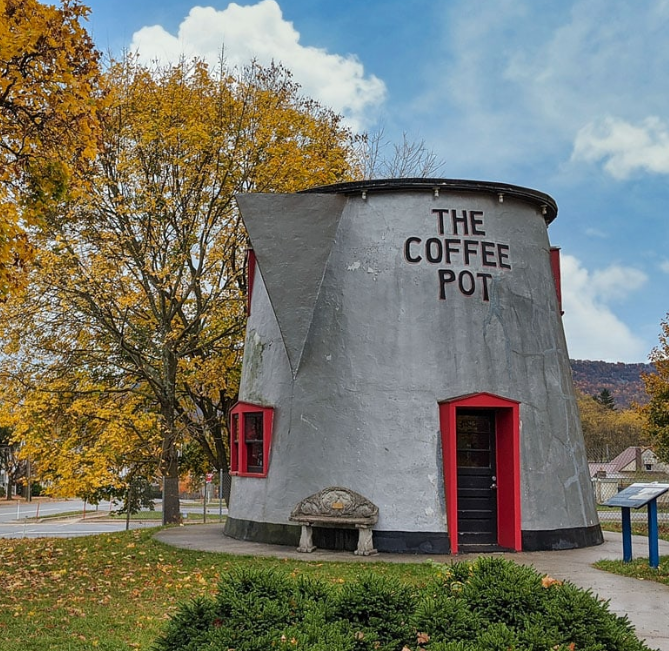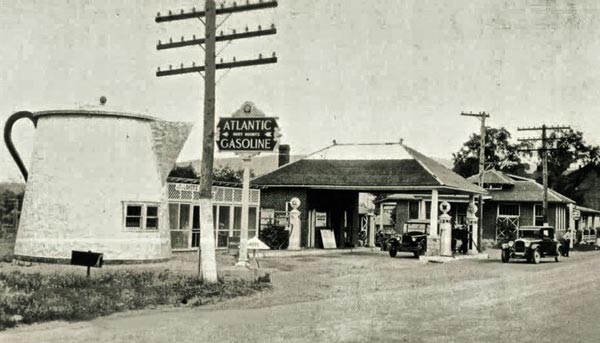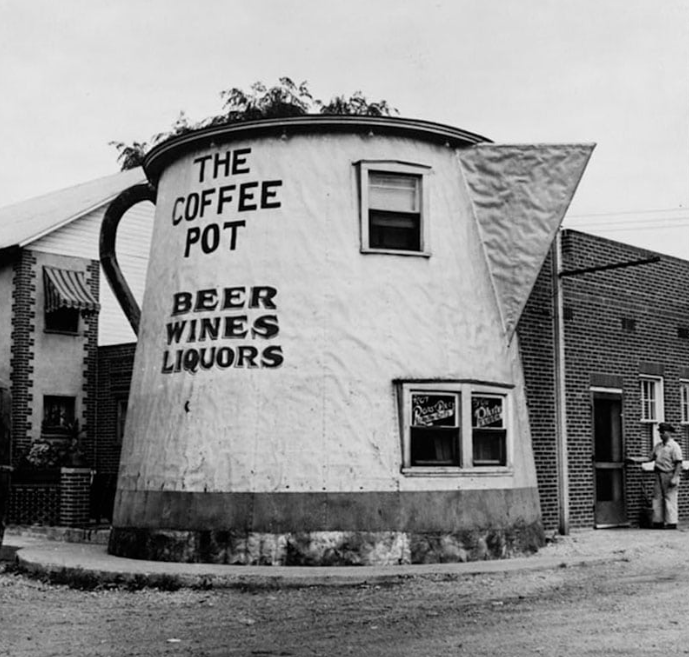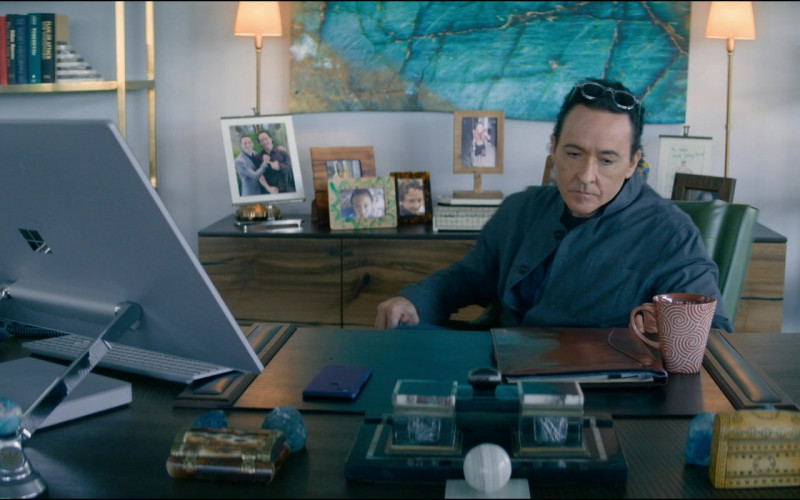
THE COFFEE POT
Paola Pioletti brought this curious construction to my attention! Thanks Paola!
The Coffee Pot is located in America, and more precisely in Pennsylvania, in Bedford.
It is described as an “example of programmatic architecture” created as a result of the increased number of motorists passing through on the Lincoln Highway, the first transcontinental road for automobiles in the United States, which opened in 1913 and runs for over 3,000 miles between New York City and San Francisco.

The Coffee Pot was built in 1927 by Bert Koonz to attract visitors to the service station.

In 1937, a hotel was built adjacent to the ‘coffee pot’ that served Coca Cola burgers and ice cream to travellers on Greyhound buses.

A hotel was later built adjacent to the structure.

In 2004 it was restored after Bedford County Fair in PA bought it for a dollar.
Taking a virtual tour around the coffee pot I found a very active community with a group of quilters: The Coffee Pot quilters.
Quilting is the art of sewing together several layers of fabrics of different colours and patterns, cutting them to create decorative patterns.
I really like that kind of quilting and we have several of them at home even if they are not made in communion as they are used in the States.
Did you know that we also have a national association in Italy? Quilt Italia.
The giant coffee pot in autumn is surrounded by a beautiful natural spectacle and the Bedford County Fair also organises a foliage festival.
Even Father Christmas stopped by the Coffee Pot!

Too bad there’s no more coffee in the Coffee Pot though, isn’t it?
How about you? Do you know a place just as special?



 Hi I'm Claudia and this is KCDC.
Hi I'm Claudia and this is KCDC.




OPINIONI